Bringing a cat into your home is not just a joy but a significant responsibility. What makes Scottish Fold Cats unique? What specific care do they need? How did this delightful breed originate, and what quirks make them stand out?
Understanding your new pet involves exploring their physical characteristics, intriguing behaviors, and essential health considerations. We will guide you through the rich history of the Scottish Fold. We'll also uncover surprising details about their personality, appearance, and special needs.
Curious about the charming traits that set the Scottish Fold apart from other breeds? Want to learn the secrets behind their folded ears? What about their health requirements?
Bringing these cats into your home is a responsibility that you should take seriously. This means learning what it takes to care for your Scottish Fold properly.
Which health conditions are most likely to affect Scottish Folds? How should owners care for their ears?
What traits and temperaments could you come to expect from your new pet? Continue reading to learn everything you’ve ever wanted to know about Scottish Folds, as well as some surprising fun facts!
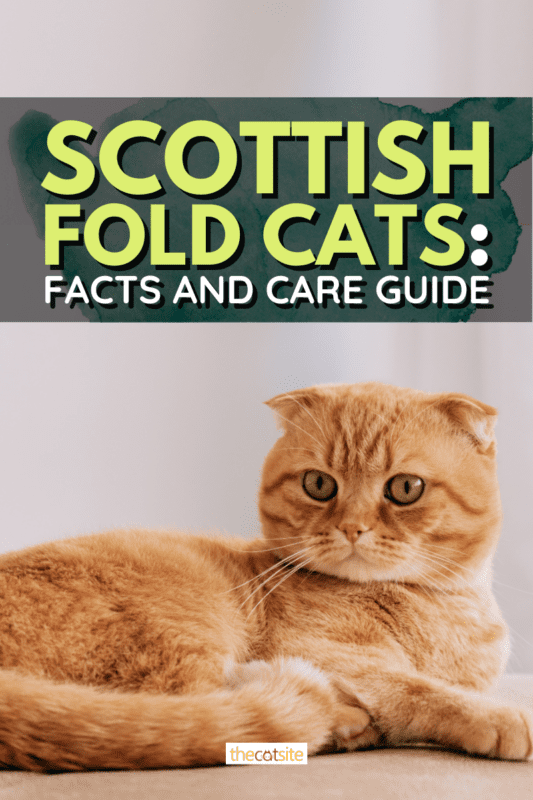
A Brief History Lesson In Scottish Fold Cats
Did you know that the entire breed can be traced back to a single cat? A white barn cat was discovered near Coupar Angus in Scotland in 1961 by shepherd William Ross.
He was so taken with the cat’s beauty that he asked the owner if he could take possession of one of her kittens. That kitten, named Susie, ended up being the foundation queen of the entire Scottish Fold breed.
After consulting with a geneticist, Ross facilitated Susie’s motherhood to dozens of kittens in a relatively short span of time. Within just a few years, there were over thirty Scottish Fold kittens in Scotland.
The popularity of this new breed got the Scottish Fold awarded the championship by the Cat Fanciers’ Association in the 1970s. This happened a little more than a decade after the discovery of the trademark ear mutation.
Ever since the Scottish Fold has quickly become one of the most distinctive cats in the world. Their adorable traits have reached nearly every corner of the globe. That’s quite a feat to pull off in just a few short decades!
Little Cat, Big Personality
Amusing Behaviors
Scottish Folds are well-known for their interesting and downright amusing behaviors. If you spend some time around these cats, it won’t take long for you to observe silly antics! They like sitting upright, standing on their rear paws, lying flat on their backs, and putting their paws up in the air.
Affectionate Companions
However, their real charm comes from how much they love to be around their humans.
These felines are true friends to have in your home. They thrive when they get lots of love and one-on-one attention from their people.
Talkative and Sociable
Scottish Fold Cats are talkative, sociable, and incredibly loving creatures. They do not let their ear mutation affect their ability to communicate with those around them.
Active and Intelligent
Your Scottish Fold is also likely to be pretty active! As a kitten and as an adult cat, during their play, you will see just how intelligent this breed is. They excel at puzzles and are even known to get into a game of fetch with their chosen humans.
Favorite Activities
Teaser toys are a well-known favorite of theirs. Although their focus is less on the toys and more on the person holding the toy. Anything involving time spent with their people is a Scottish Fold’s favorite activity.
Need for Companionship
Because the Scottish Fold is so highly social, they hate to be left alone for extended periods of time. This means that this breed is not ideal for individuals and families who spend a lot of time outside of the home.
These animals need companionship just as much as they need food and water. Therefore, it’s best to make sure that you never have to leave your Scottish Fold alone for too long.
Friends with All
Scottish Folds are known for being friends with people of all ages, other cats, and cat-friendly dogs. Their calm nature makes them a wonderful addition to any family!
The Physical Characteristics of Scottish Fold Cats
Scottish Fold cats have a unique look that goes beyond the ear fold. Here's what a purebred Scottish Fold cat should look like. For more information, see the official CFA breed standard here and the official TICA breed standard here.
Ears
The uniquely folded ears of the Scottish Fold don’t become evident until a kitten reaches three weeks old or so. Kittens are born with straight ears that will end up folding in time. However, not every cat’s ears will fold in the same way.
There are several possibilities for the way in which your cat’s ears will change and fold forward:
- Single-fold bent halfway up the ear.
- Double-fold, a tighter fold than the single-folded ear.
- Triple-fold, with the ear-bending forward so much that the ears lie almost flat to the head. The triple-folded ear is considered ideal in cats used to show.
However, not every Scottish Fold will have their ears fold at all. In fact, it has been estimated that fewer than half of all Scottish Fold kittens’ ears will ever fold to any degree.
They are still as much a Scottish Fold as their tipped-ear counterparts. Additionally, their genetics are valuable to the breeding programs that ensure the continuation of the breed.
Size
In terms of size, the Scottish Fold is a medium-sized cat. The average Fold weighs between 8 and 13 pounds. They aren’t exceptionally long and have average, medium-length tails.
Because this cat is not particularly high-energy, Scottish Folds can be especially vulnerable to undesirable weight gain. Owners should make sure to feed their feline companions a well-balanced diet to combat this concern.
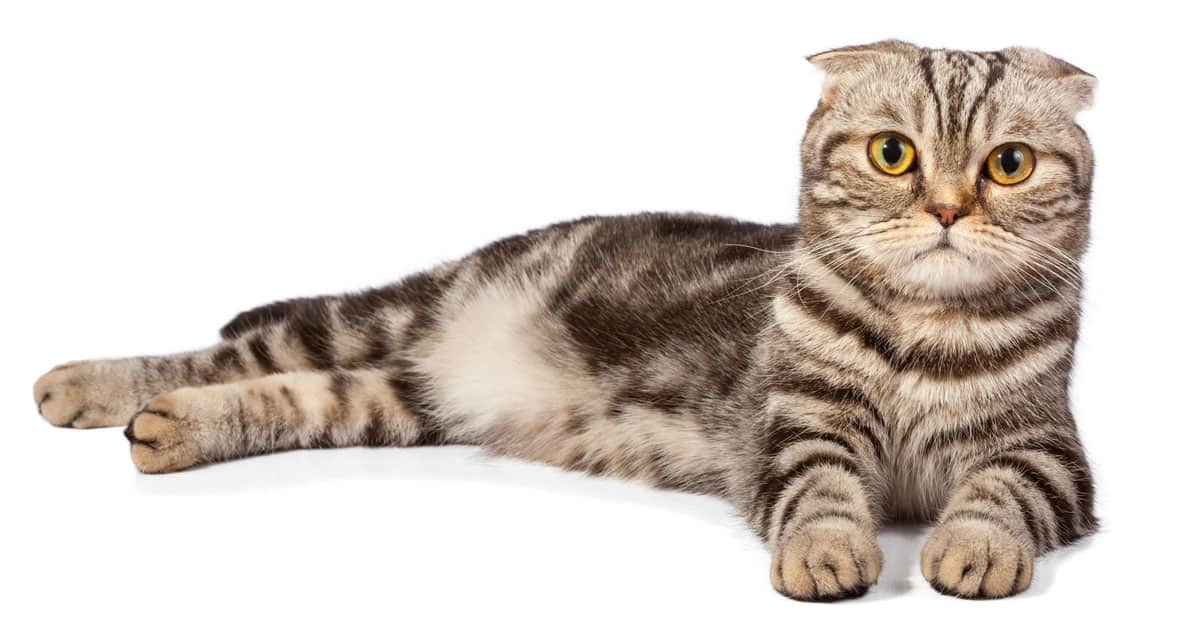
Coat
Scottish Folds come in long-haired and short-haired varieties. Sometimes, the long-haired Scottish Fold is referred to as the Highland Fold. Both coat types are exceptionally soft and fluffy, which only fuels their nickname of “teddy-bear cats.”
Coloration is varied in this breed. The possible coat colors range from bicolor and parti-color to tabby and solid colorations.
It is believed that the color of the cat’s eyes relates to the color of their fur, as well. As an example, white Scottish Folds tend to have blue eyes. They are also more likely than others of their breed to have eyes of two different colors.
Scottish Fold Cats: Health Considerations
Generally, Scottish Folds are healthy and hearty cats that can live up to fourteen years on average. However, they are vulnerable to many of the same conditions that can affect other cats, especially as they get closer to the end of their natural lifespan.
There is one condition that is known to be particularly prevalent in Scottish Folds that every prospective owner needs to know about.
SIGN UP FOR THECATSITE'S EMAIL UPDATES >
Osteochondrodysplasia in Scottish Fold Cats
The special health condition that needs to be considered when adopting a Scottish Fold cat or kitten is related directly to the ears that make them so stunning and unique: Osteochondrodysplasia. Because this is quite a mouthful to pronounce, the condition is often referred to as “OCD.”
It is a degenerative joint condition that results in the folded ears characteristic of Scottish Folds, but it affects other areas of the body as well – with some problematic side effects.
The tail, ankles, and knees are especially vulnerable to the degenerative effects of OCD in Scottish Folds. Essentially, the condition causes the cartilage to be lacking between the joints. The end result often includes fused bones, stiffness, and even crippling pain that can render the cat immobile.
If you’ve noticed that your Scottish Fold doesn’t seem to have the same range of movement that he or she used to, it is quite possible that they are developing the symptoms of OCD and should be brought to the vet for assessment.
One way that owners can help stave off the effects of this disease is to ensure that their Scottish Fold does not become overweight. The addition of excess fat causes strain on the joints that are already or could become affected by OCD. Tails might become stiff as a result of this condition and should be touched only in the gentlest of ways if affected.
OCD is not necessarily life-threatening, but it can greatly diminish your Scottish Fold’s overall quality of life.
Polycystic Kidney Disease (PKD) in Scottish Fold Cats
Scottish Folds seem to have a heightened incidence of Polycystic Kidney Disease or PKD, though it can occur in cats of all breeds. This condition is passed on from parent cat to kitten and can have a drastic negative impact on the functionality of your cat’s kidneys.
The disease causes normal kidney tissue to become replaced with cysts, stifling the kidneys’ ability to filter out toxins from the animal’s body. PKD often ends in kidney failure and death.
If you are looking to adopt a Scottish Fold and have concerns about PKD, you should ask for a certificate of health from the breeder as well as test certificates to verify that neither parent cat has or had the disease.
Should your Scottish Fold begin to display one or more of the following symptoms, it is time to schedule a visit with your veterinarian:
- Anemia
- Ataxia
- Blindness
- Blood in their stool or vomit
- Depression
- Excessive thirst
- Excessive urination
- High blood pressure
- Lethargy
- Weakness
- Weight loss
Unfortunately, there is no cure for PKD. Your vet can recommend supportive care to prolong the cat’s life, but it is likely that they will die from this disease.
Caring for Your Scottish Fold
Because of their ears especially, this breed of cat requires some additional care that other cats do not. Fortunately, Scottish Folds do not typically require any major changes to how you would care for any other cat.
Much of their care is the same as generalized cat care guidelines:
Scottish Fold Cats: Grooming Requirements
Groom the cat by brushing their fur with a soft brush, trimming their nails when they become long, brushing their teeth once weekly to prevent periodontal disease (which is common in all cat breeds), and cleaning their eyes of any built-up gunk that may have formed.
Longhaired Scottish Folds may require some additional grooming of their rear ends and their fur in general.
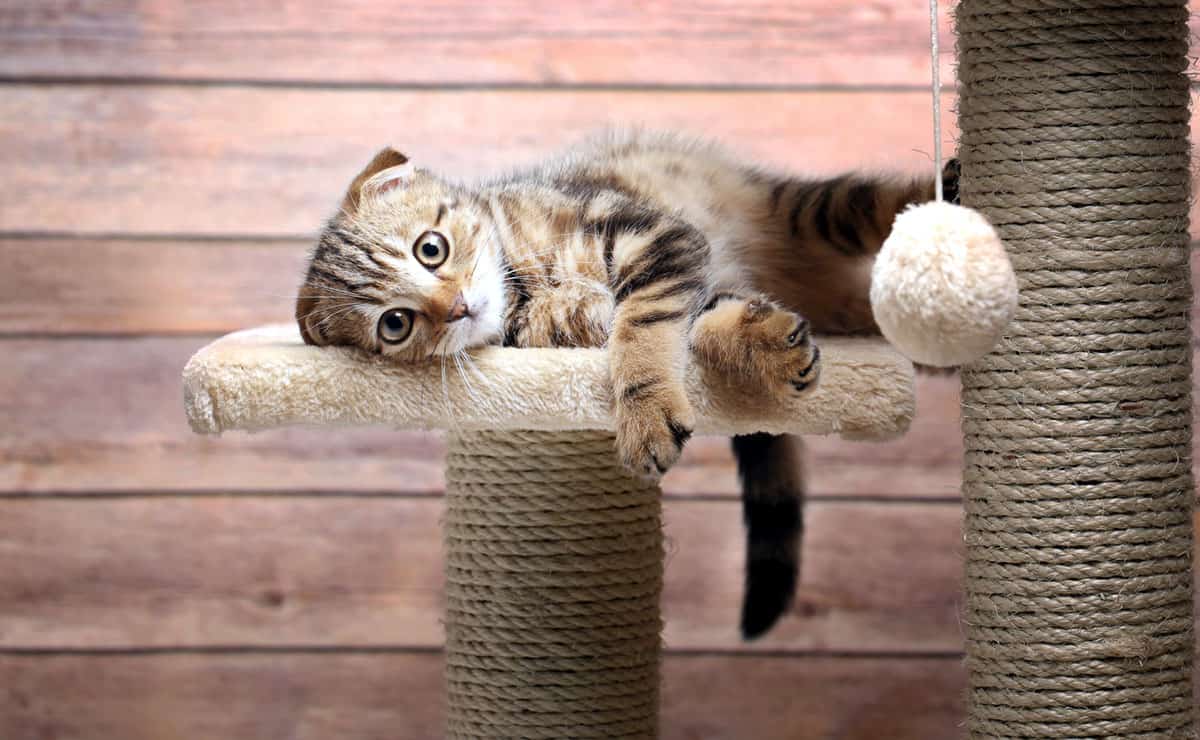
Keep their litterbox clean by scooping it daily and replacing the litter at least once weekly.
Make sure that the cat’s ears are kept clean. This can be difficult for them to do on their own, especially if their ears are dramatically folded (like a double or triple-fold).
You can clean your cat’s ears once a week with a 50-50 cider vinegar-water mixture on a cotton ball. Avoid using Q-tips, as you can cause accidental damage to their ears with this common cleansing tool.
Vet Visits
Pay attention to your cat’s behaviors and movements. Be aware of OCD and its effects on the felines afflicted with it and adjust your playtime with them accordingly.
A cat that has become stiff with painful joints might not be as keen on playing in the same way that they used to. Schedule vet visits whenever your Scottish Fold begins displaying new and unpleasant behaviors or symptoms of illness.
Which Diet Is Right for Scottish Fold Cats?
Make sure that they have a well-balanced diet. If you’re not sure what is the best feeding option for your Scottish Fold, inquire with a veterinarian.
Becoming overweight can be especially problematic for Scottish Fold cats, due to the common degenerative joint disease that occurs in their breed.
How should you play with your Scottish Fold cat?
Play with your cat! Your Scottish Fold wants nothing more than to be the center of your universe, so they need all of the attention that you can spare.
While they are not the most high-energy cats, they still love a session with a teaser toy or simply sitting on their human’s lap and being snuggled. A Scottish Fold’s favorite pastime is spending time with their companions.
It is recommended that you keep your Scottish Fold as an indoor-only cat, particularly due to the dangers of wild animals and cars to outdoor cats.
This breed is also prone to being stolen if left outside, due to their unique features and the fact that some individuals will gladly snatch up a cat as beautiful as the Scottish Fold to avoid having to pay for one themselves.
Provide - and receive - Companionship
Ensure that your cat is never left alone for too long. If you work long hours or are frequently away from home for other reasons, a Scottish Fold might not be the best cat for your situation.
They aren’t very independent if you haven’t figured that out already. They often do well in homes where they have other animal playmates, like cat-friendly dogs and other cats that do well in pairs or groups.
If a Scottish Fold is left alone for too long, too often, they will grow to dislike their environment.
10 Fun Facts About Scottish Fold Cats
Not only are Scottish Folds irresistibly adorable, but they are also incredibly interesting and surprising animals! We thought that you might like to know these ten fun facts about this cherished breed.
1. Unique Breeding for Folded Ears
The mutation responsible for the cat’s signature folded ears only occurs when a Scottish Fold is bred with a straight-eared cat breed.
2. Arrival in the United States
Scottish Folds only came into the United States in 1971, ten years after the discovery of the first Scottish Fold kitten, Susie, in Scotland.
3. Lack of Recognition in Scotland
Strangely enough, Scottish Folds are not recognized as a breed in Scotland. This is due to the fear that the mutation of their ears could leave them especially vulnerable to deafness, infections, and ear cartilage damage.
4. Social Butterflies
This breed is suspected to be the most social of any breed of household cat. They love children, adults, the elderly, other animals, and guests that appear in their homes.
5. Snoring Sleepers
Many Scottish Folds are observed to snore when they sleep. This is likely due to the fact that they are so inclined toward sleeping on their backs.
6. Quiet and Content
Scottish Folds are notoriously quiet. While you might not be able to hear their purr as you would for most other cats, you can rest assured that your cat is quite content as long as they are getting the food, water, and love that they need.
7. Rarity of Pure White
Pure white Scottish Folds are difficult to find because most reputable breeders will not actively aim for this coloration. Pure white cats tend to have a greater likelihood of developing or being born with hearing problems.
8. Laid-Back Nature
These cats are not easy to startle. While other breeds might jump at a loud noise, Scottish Folds are so laid-back that they are unlikely to respond with any kind of quickness unless they sense imminent danger.
9. Notorious Couch Potatoes
Scottish Folds are notorious couch potatoes. These indolent kitties are prone to lazing around for most of the day, with bursts of energy between lounging sessions.
10. Original Name: "Lop-Ears"
Until the Scottish Fold became a registered breed, they were called “lop-ears” or “lops,” since their ears bear some resemblance to the lopped ears of a rabbit.
Wrapping Up
Scottish Folds are an interesting, adorable, and friendly breed that will do well in any home that can pay them the attention that they crave.
They are about as low-maintenance as a cat can get, considering their lazy nature, laid-back personas, and generally content disposition.
However, Scottish Fold owners should be aware of the condition of Osteochondrodysplasia, or OCD, which is responsible for the folded ears that are the signature of this breed. This condition, while not life-threatening, affects the body of the cat in forms like arthritis and fused bones.
This is another reason – not that you needed another reason – to spend a lot of time with your Scottish Fold cat. The more time that you spend with this animal, the more likely you will be to acknowledge changes in the cat’s behavior and movements as they relate to this common degenerative joint disease.
Scottish Folds live just as long as the average cat of any other breed, but because of their ears, owners need to be especially knowledgeable about these cats.
If you can apply the right amounts of practical ear care, nutrition, and love, you will have a companion that will not want to leave your side for the rest of his or her life.
SIGN UP FOR THECATSITE'S EMAIL UPDATES >
You might also like:

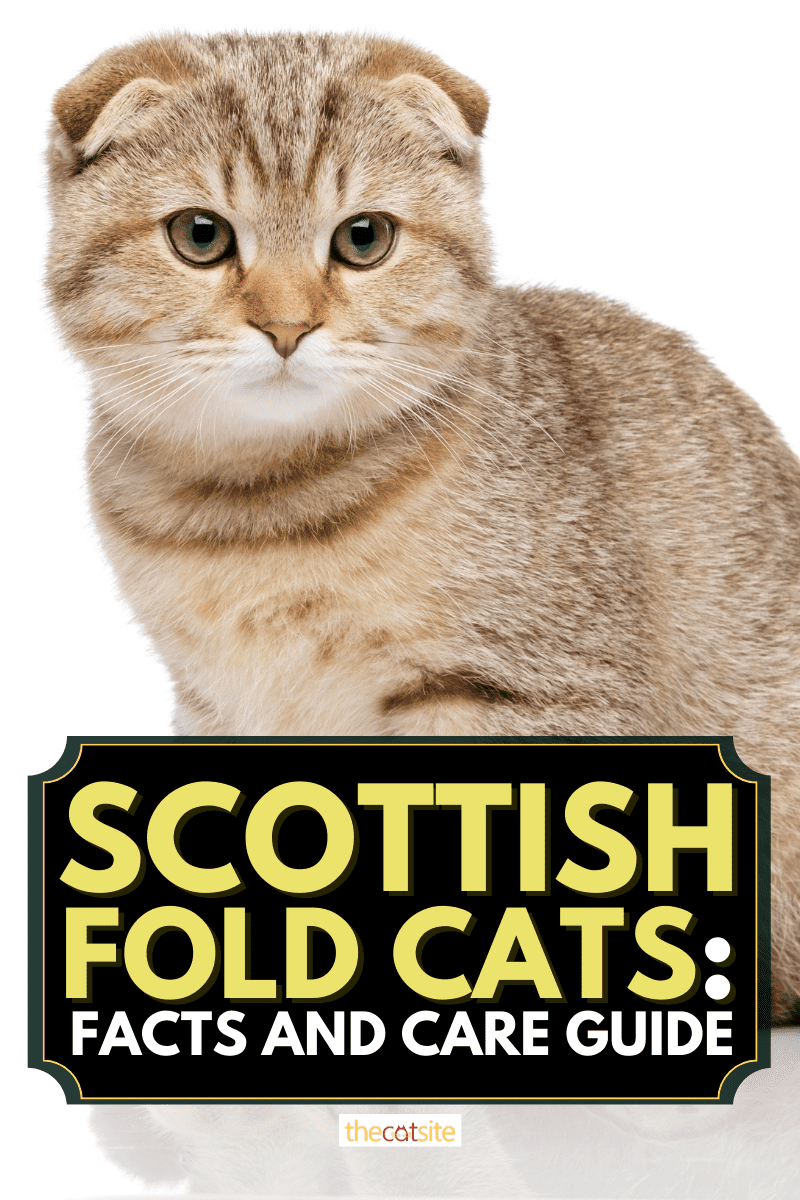
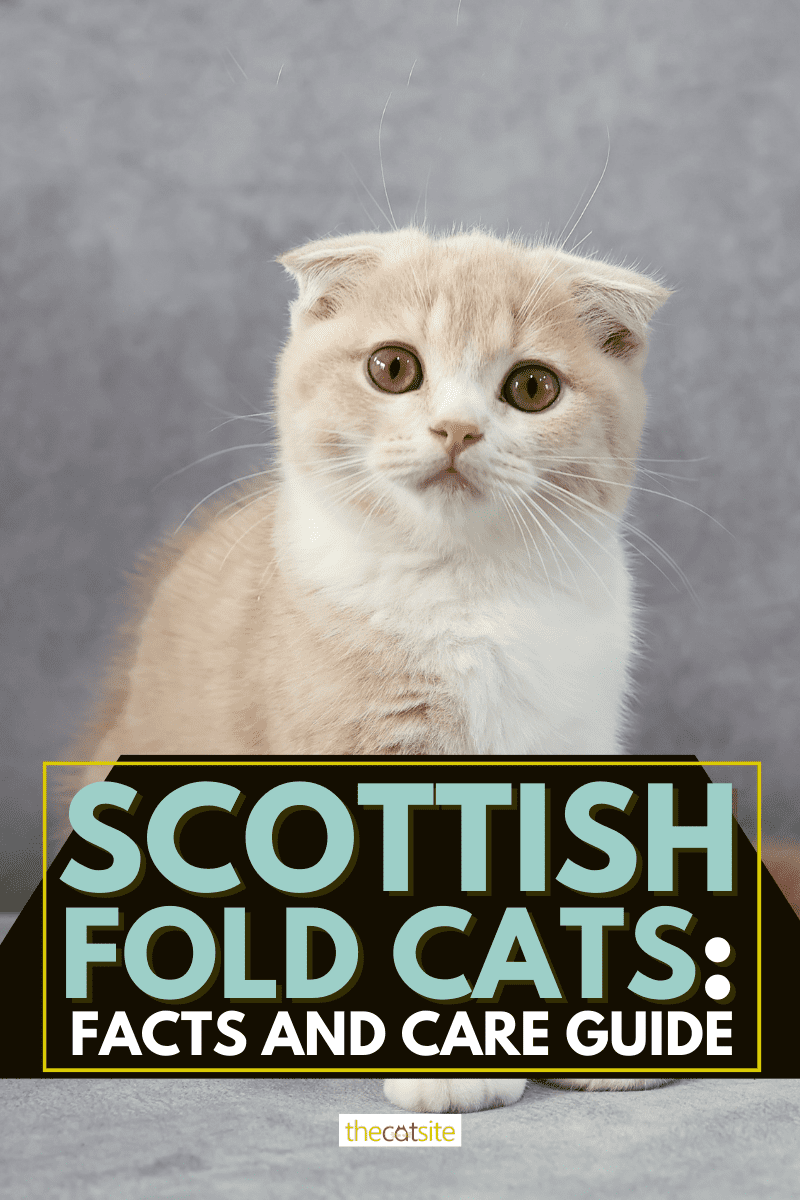
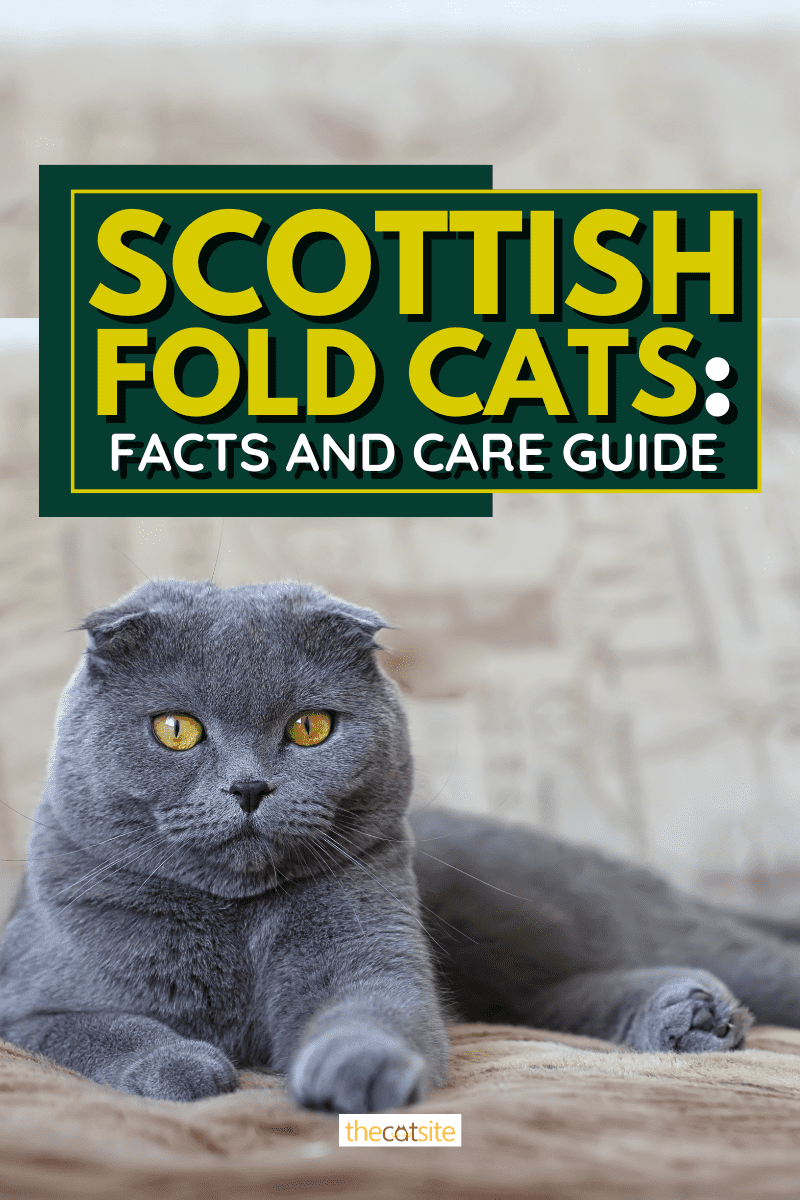
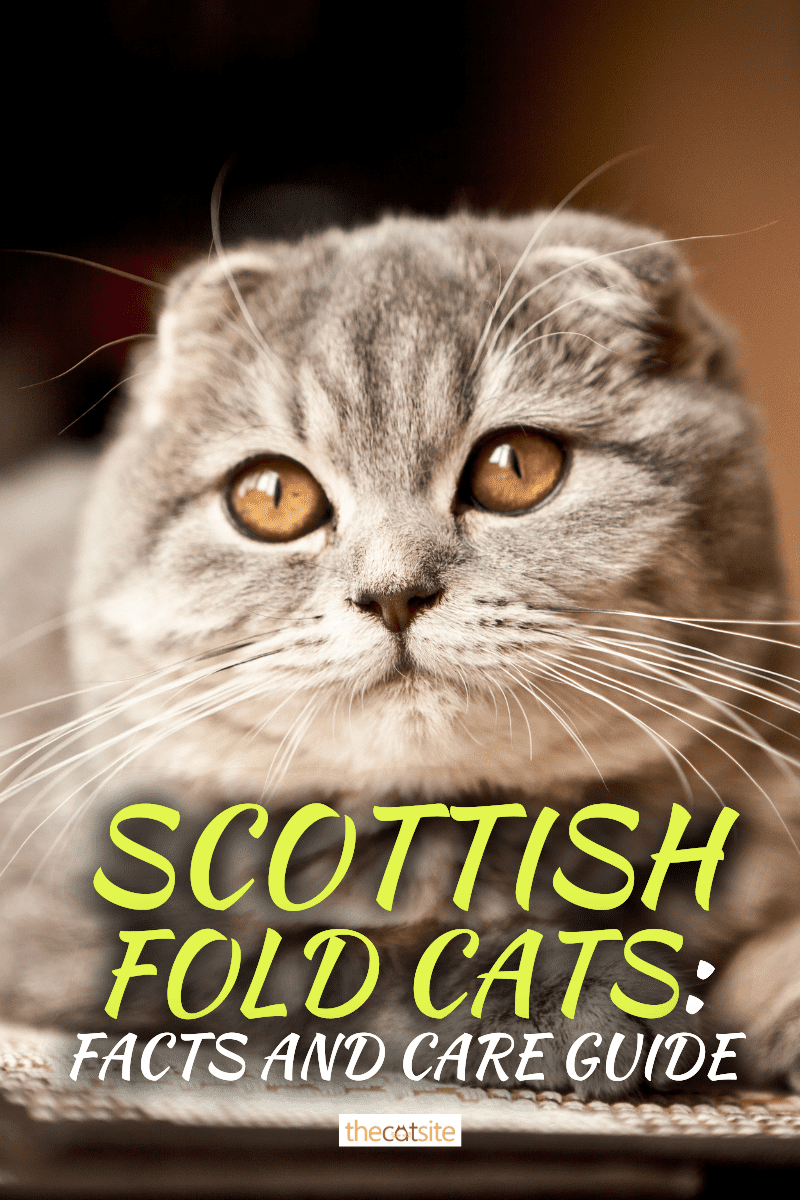
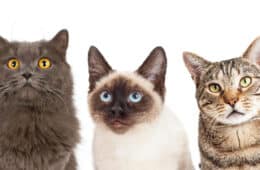
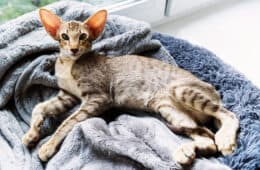
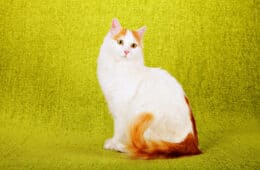
11 comments on “Scottish Fold Cats – Facts And Care Guide”